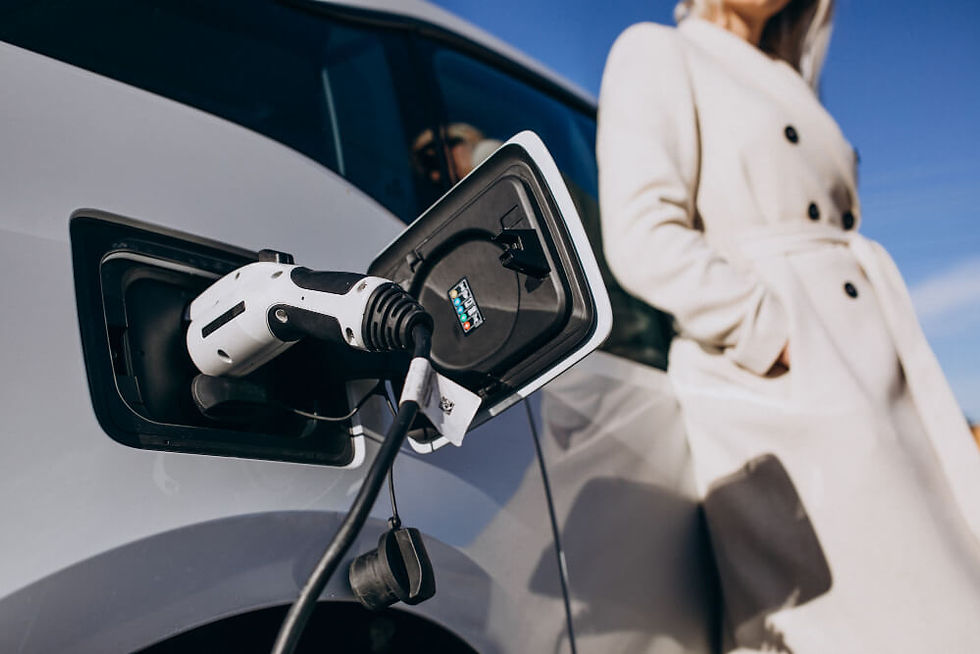Common Installation Mistakes That Hurt Charger Performance
- Social Media
- Jul 4
- 3 min read
Updated: Jul 29
A Smooth Install Doesn’t Always Mean a Good One
Installing an EV charger might seem straightforward—plug it in, bolt it down, and you're good to go. Right? Not quite. Even the most professional-looking setups can silently underperform if key steps are skipped or done poorly. And when it comes to EV charging station installation, a few common mistakes can seriously affect performance, reliability, and even safety.

1. Ignoring Power Load Capacity
Before any EV charging station installation, assessing the power load is crucial. One of the biggest mistakes is assuming your existing electrical setup can handle the added demand. Overloading circuits can lead to fluctuating performance or frequent trips.
Tip: Always confirm that the electrical system can handle multiple chargers or future upgrades without strain.
2. Using Improper Cable Lengths
Too short? That’s inconvenient. Too long? That’s messy and dangerous. Poor cable planning can create a clunky user experience and increase wear over time.
EV charging station installation should include careful measurement and planning of cable placement to ensure ease of access and safety without cluttering the space.
3. Skipping Grounding Checks
Improper grounding is a silent killer. It may not show issues at first, but over time, it can cause inconsistent charging or even damage the vehicle's battery management system.
Every EV charging station installation must include a proper grounding check. It's non-negotiable for long-term reliability and safety.
4. Incorrect Charger Height or Angle
Mounting the charger at the wrong height or angle is a surprisingly common error. Too high or too low, and it makes daily use annoying. Tilted angles or unstable brackets can even lead to hardware damage.
Always follow ergonomic guidelines during EV charging station installation to make sure users don’t have to bend, stretch, or struggle.
5. Overlooking Weatherproofing
Chargers installed outdoors need more than a simple enclosure. Skipping proper seals, covers, or drainage planning can lead to corrosion, shorts, or premature breakdowns, especially during monsoon or winter months.
Weatherproofing should be a top priority in any EV charging station installation, not an afterthought.
6. Poor Site Selection
Placing the charger in a tight corner or behind other parked vehicles kills convenience. A good location should allow easy access without disrupting traffic flow.
EV charging station installation teams should walk through the space as if they were drivers using the unit. That user perspective helps spot the best location.
7. Forgetting Network or Software Setup
Smart chargers need a strong network connection to function fully, like tracking usage or remote access. Missing this step during EV charging station installation can leave features unused or unreliable.
Always test connectivity before wrapping up the job. A hard-to-reach charger without a connection is like a smartphone without Wi-Fi.
In Short: It’s All in the Details
When it comes to EV charging station installation, performance doesn't just depend on the hardware—it’s shaped by dozens of small, often overlooked decisions. From proper cable management to software setup, each step plays a role in ensuring a smooth, long-lasting experience for every EV owner.
Avoiding these mistakes doesn't require fancy tech, it just takes good planning, attention to detail, and a user-first mindset.
FAQs
Q1. Can a poorly installed EV charger damage my vehicle? While rare, improper grounding or unstable electrical flow from poor EV charging station installation can risk harming sensitive vehicle systems over time.
Q2. What’s the ideal location for a home charger? Choose a spot that balances access, weather protection, and minimal disruption to daily movement. A good EV charging station installation always considers user convenience.
Q3. Do I need a professional for installation, or can I DIY? Even if you're handy, EV charging station installation involves electrical and safety standards that are best handled by trained professionals to avoid future issues.







Comments